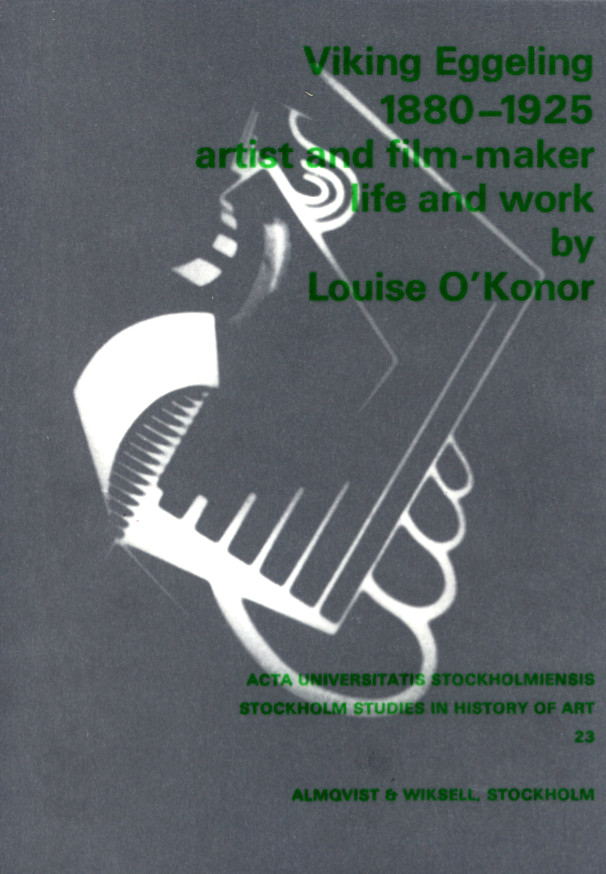David Crowley, Daniel Muzyczuk (eds.): Sounding the Body Electric: Experiments in Art and Music in Eastern Europe 1957–1984 (2012) [English/Polish]
Filed under book | Tags: · 1950s, 1960s, 1970s, 1980s, art, art history, avant-garde, central europe, east-central europe, eastern europe, electroacoustic music, experimental film, happening, sound, sound art, synaesthesia, video art, visual music

“In the aftermath of Stalinism, composers and artists in Eastern Europe were given new opportunities to experiment. New recording studios equipped with magnetic tape recorders and later, synthesizers were established, first in Warsaw in 1957 and then throughout Eastern Europe. New and often challenging forms of music were produced in these laboratories of sound.
The connections between the visual arts and experimental music were closer in the 1960s than perhaps any time before or since. Sound and image combined in artists’ films, ‘happenings’ and sounding installations. Experimental forms of notation were also created to stimulate uninhibited musical expression.
The early happenings and actions of the 1960s were associated with intellectual freedom and reform. The exhilaration of experimentation declined during the decade and in the 1970s new critical forms of art emerged which associated sound with surveillance and censorship.
This book accompanying an 2012 exhibition at the Muzeum Sztuki in Łódź explores both the optimism and the anxiety that was to be found in the experimental zone of art and music.”
The exhibition later moved to the Calvert 22 Gallery in London.
Artists: Collective Actions, Walerian Borowczyk, Andrzej Dłużniewski, Szábolcs Esztényi, László Vidovszky, Krzysztof Wodiczko, Grzegorz Kowalski, Zygmunt Krauze, Henryk Morel and Cezary Szubartowski, Eugeniusz Rudnik, Bulat Galeyev, Milan Grygar, Milan Knížák, Oskar Hansen, Zofia Hansen, Zoltán Jeney, Vitaly Komar & Alexander Melamid, Katalin Ladik, Jan Lenica, Dóra Maurer, Vladan Radovanović, Józef Robakowski, Bogusław Schaeffer.
Dźwięki elektrycznego ciała: Eksperymenty w sztuce i muzyce w Europie Wschodniej 1957–1984
Publisher Muzeum Sztuki, Łódź, 2012
ISBN 9788387937980
222 pages
David Crowley’s presentation at MoMA (video, 50 min)
Sounding the Body Electric: A Conversation (Michał Libera, Art Margins)
Accompanying audio 2-CD
PDF
PDF (exh. guide, Calvert 22 Gallery, London, 2013, added on 2023-12-27)
Mary Hallock Greenewalt: Light: Fine Art the Sixth (1918)
Filed under booklet | Tags: · art, colour, light, synaesthesia, visual music

Greenewalt playing on her colour organ, the Sarabet, in 1925. (via CVM)
Between 1918 and 1926, the Beirut-born and Philadelphia-based visual music pioneer Mary Hallock Greenewalt (1871–1951) delivered a number of lectures to the Illuminating Engineering Society of Philadelphia. In them she outlined her project of the development of a colour organ. In an address of April 19, 1918, titled “Light: Fine Art the Sixth,” Greenewalt cited innovations in painting by the artist Corot which encouraged her to investigate light and colour as a means of enriching musical expression. Greenewalt also referenced reports of synaesthetes, people who experience cross-sensory perceptions such as those who see letters or numbers in different colors.
26 pages
A brief outline of all four lectures
Greenewalt’s biography from the Historical Society of Pennsylvania
View online (Archive.org)
Other formats (Archive.org)
Louise O’Konor: Viking Eggeling, 1880-1925: Artist and Film-maker: Life and Work (1971)
Filed under book | Tags: · abstract art, abstract cinema, art, art history, biography, dada, experimental film, film, visual music

Louise O’Konor’s book is the first biography of Viking Eggeling, a Swedish avant-garde artist and filmmaker connected to dada, constructivism and abstract art and one of the pioneers of absolute film and visual music. The book is a result of 12 years of research in public and private archives in Europe and in the USA, and is a significant contribution to the history of dada and early abstract, animated film.
Translated by Catherine G. Sundström and Anne Bibby
Publisher Almqvist & Wiksell, Stockholm, 1971
299 pages
via DiVA Academic Archive
PDF (165 MB, updated on 2013-12-8)
Watch Eggeling’s Diagonale Symphonie (1924) on UbuWeb

